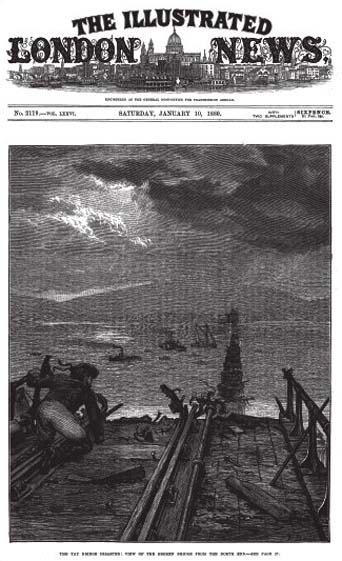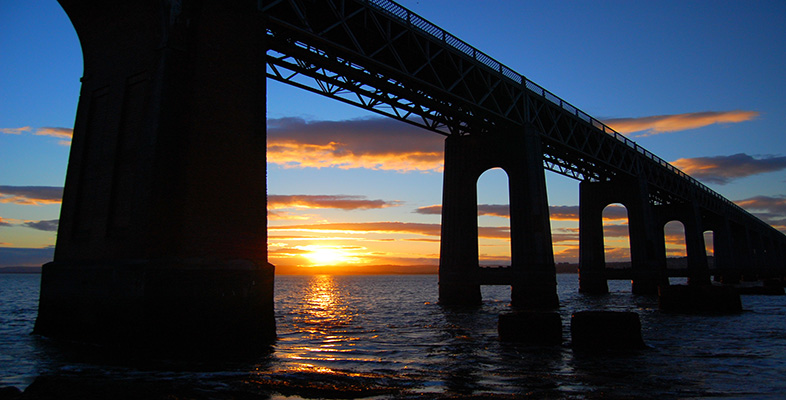Disaster!
The train receded into the darkness and the light of the three red tail lamps grew dimmer. Sparks flew from the wheels and merged into a continuous sheet that was dragged to the lee of the bridge parapet. Eyewitnesses would later recall at the inquiry that they saw a bright glow of light from the direction of the train just after it must have passed into the high girders section, and then all went dark.
The train was timed to pass the Dundee signal box at 7.19 pm. When it failed to arrive, the signalman tried to telegraph the Wormit box, but to no avail. The obvious conclusion was that the telegraph lines had been severed where they passed over the bridge.
James Roberts, the locomotive foreman at the Dundee engine sheds, walked out over the bridge to investigate.
Although at times he was forced to crawl on all fours by the force of the gale, he eventually made his way to the end of the low-level girders (Figure 19). Further progress was impossible: the whole length of the high girders had disappeared into the river taking the train with it. Although steamers went out later that night, no survivors were found.

Question 3
At the time of the disaster, the wind was coming from the west and the high girders fell to the east. What does this suggest about the root cause of the failure? What effect, if any, would the train have had? What supporting evidence is there for your theory?
Some structural damage occurred in Dundee at about 7.15 pm, including loss of several chimney pots and at least one tree was blown over. What can be inferred about the wind speed at the time of the disaster?
Answer
One possible cause is lateral wind loading on the high girders, which would have pushed them downwind. The train would have offered additional resistance to the wind and this would have made the failure more likely. The main supporting evidence is the ‘sheet of sparks’ coming from the wheels of the train on the lee side of the train. It was presumably caused by the iron wheels rubbing against the rail, caused by the train being pushed over by the wind. The same effect was seen on the previous train to cross the bridge.
Using Table C1 from Input 2 to estimate wind speed shows that slight structural damage is characteristic of force 9 winds, although with a tree uprooted, gusting up to force 10 also probably occurred. With these limits, the lowest speed at the height of the storm was about 55 mph, with gusting up to about 63 mph. The train was lost at about 7.15 pm when this structural damage occurred. The actual wind speeds at the height of the train – about 88 feet above the water of the Tay – may have actually been slightly greater because the Beaufort estimates are based on a height of 33 feet, and wind speed generally increases with height above the ground or the sea.
